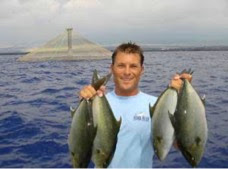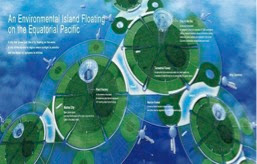I
started my career right out of law school in 1974 with an offer of employment at
one of the leading patent law firms in New York City. In those days, that made it one of the leading patent law
firms in the United States and, by extension, the world. I recall my excitement walking to work at
30 Rockefeller Center (then named the RCA Building) where the firm had its
offices below the famed Rainbow Room on the top floor. How wonderful it was to be at the
center of the Universe working to protect the technological innovations of some
of the world’s greatest companies! Later I co-founded the law firm of Ostrager Chong Flaherty and Broitman, PC, continuing in patenting and intellectual property (IP) law practice. In my mid-life, after 22 years in New York City, I finally decided to return
to Hawaii’s beautiful and easy-going living environment, where I continued my IP law practice with individual
inventors and startup technology companies.
Now
over 40 years have gone by and I have decided that the time has come to retire
from my lifelong profession. By my
estimate, I have worked on over four thousand patent applications, over half of
which statistically issued as U.S. patents. My work spanned successive waves of technological innovations
in my field of electronics, from mainframe computers, to personal computers, to
Internet commerce, to mobile devices and, more recently, to smartphones. In retrospect, my work in patenting was
but one link in the ongoing evolution of human tool-making. Upcoming patent attorneys will continue
the work with new waves of innovations in robotics, bionics and biologics, and
much more to come.
The
immediate legal effect of patenting is an official grant by the U.S. Government
to an inventor of the exclusive right to make, use and sell the patented
invention in the U.S. This is a
grant of rights enshrined in the U.S. Constitution, Article I, Section 8. And it starts with the happy occasion of
the inventor’s receipt of a gold-sealed, red-ribboned patent certificate from
the U.S. Patent Office. What
happens after that can go in a wide range of directions.
Following a period
of anti-trust enforcement in the 1960s and 1970s against large corporations
monopolizing markets in the U.S. economy by accumulating large thickets of
patents, Government policies in the past four decades have shifted to
incentivizing individual, university, non-profit, and small company inventors (“small
entities”) to develop innovations with greater speed and creativity than large companies
can. This started with the
Bayh-Dole Act in 1980 enabling small businesses to retain title to inventions developed
in Federally-funded research programs.
With corporate R and D budgets subject to tightening for better bottom
lines to appease stock market investors, patenting has shifted away from
primarily corporate inventions to small entity inventors receiving over
one-half of all U.S. patents granted annually.
In a conventional
business model, small entity inventors will try to start up or partner with new
businesses to commercialize their inventions. Most do not succeed, primarily due to difficult business
circumstances, but also because early attempts to design, produce and sell a
new product or service require some vetting in competitive markets before it becomes
attractive enough to purchasers to command a significant market share. Faced with making a huge investment of
time and effort, and a high business risk of failure, small
entity inventors may instead seek to license or sell their inventions, and the
patents that legally define their exclusive rights to those inventions, to large
companies with already-established positions in the relevant markets. Large companies, with innovation
constrained by tightened R and D budgets, also have become more open to
“licensing-in” outside innovations, as long as the cost is less than expensing
their own efforts. These trends
were accelerated with the Internet becoming publicly accessible as a global network
in 1993 to anyone anywhere, which started the “dot.com” revolution in new e-commerce
applications and mobile device technologies.
Licensing-in
outside innovations is a marriage of convenience that can work well initially,
but inevitably can lead to demands for higher licensing fees or sale prices, and
to large companies choosing to develop their own versions on innovation ideas if
the patent owners’ demands seem too high.
A seminal event that captured headlines worldwide in 2006 was when the
Canadian company Research In Motion (RIM) that popularized the Blackberry
mobile device was sued by and settled the claims of the patent owners for $612
million in order to continue to operate its Blackberry network. A flood of so-called “patent troll”
lawsuits followed, routinely seeking billions in patent infringement damages,
with the threat of a court injunction against further usage as leverage. Over time, with plaintiffs’ lawyers
being ever creative, large numbers of lawsuits were being prosecuted on sometimes
dubious patents, and vigorous litigation tactics tended to devolve into artful
gamesmanship.
Although abusive
patent litigation tactics occurred in only a minority of cases, negative news
reportage on “patent troll” litigation made it seem like this was another
example of opportunistic “sharks” using the legal system for payoffs of huge
undeserved gains, much like how the packaging of collateralized debt obligations
was abused to rig the financial system.
Patent reform bills were lobbied for and eventually the America Invents
Act (AIA) was enacted in 2013, which, along with changing
the U.S. to a first-to-file invention priority system, had the effect in
litigation of opening patents to repeated re-examination challenges upon any
qualified requests to the U.S. Patent and Trademark Office (USPTO) over the
patent term. At the same time,
U.S. courts have been issuing decisions that toughened the requirements for
upholding the validity of patents, diminished the scope of infringement damages
recoverable, and made injunctions against infringement difficult to obtain for
non-operating patent owners. The
net effect of this backlash against the assertion of patents has been to make patents
too costly and too difficult for small entities to defend, and turn their
value for large companies into litigation assets to be amassed for defense against
infringement suits by competitors or for billion-dollar sale in corporate divestment.
Patent policies have thus reversed course over the four decades of my law practice, from sanctioning
large companies for using them as tools to create industrial monopolies, to preventing
small entities from using them as tools for extracting payoffs from large
companies. As a result, the value
of patenting has been diminished as conventional methods of extracting
value from them have been upended.
The one exception is in the pharmaceutical and medical industries where
patents are still used to preserve market exclusivity to enable companies to
recoup the large investments needed to develop FDA-approved drugs, medical
therapies and devices. In the long
view, perhaps this market-exclusivity model for use of patents is the correct (or
more correct) outcome, that is, policies that effectively discourage use of
patents to extract opportunistic “rent-seeking” gains, and instead enable patent
owners to recoup investments in bringing new products to market.
So my advice for
the upcoming generation of patent attorneys is to be prepared for the current trend
of diminishing value in patenting to continue, with consequent decreasing of law
firm job opportunities and salaries, except for those companies that are making
the investments necessary to bring their innovation products to market. Patent validity will also continue to
be stringently scrutinized in the USPTO and in litigation, which means that
patent drafters will need to be increasingly more technical in scientific
competency as well as up-to-date on developments in patent law.
For
individual and small company inventors, my advice is to expect that it will increasingly
prove too long, costly and uncertain to try to enforce patents in order to recover licensing fees from well-defended
large companies under current policies.
Again, the better business model for patenting in at least the near-term
is to defend market-exclusivity for new products that are introduced in relevant markets. As for further patent reform, don’t
expect a Trump Administration committed to preserving jobs at companies kept in
the U.S., and a fiscally conservative Republican-controlled Congress opposed by a
fractious Democratic minority, to pass a patent reform bill that shifts patent policies away from favoring large companies to bolstering the
enforcement rights of small entities.
I
feel fortunate to have been in law practice during an exciting period of
dynamic changes in technological innovation. Going forward, I will continue to write on developments in patenting
and IP law that may be of interest to technology communities in Hawaii, and
will remain available for consulting on IP-based business strategies. And to those that continue in patenting,
I confer the Spockian valediction, “Live long and prosper”.







